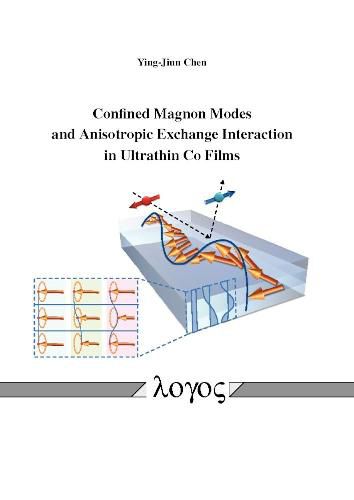Readings Newsletter
Become a Readings Member to make your shopping experience even easier.
Sign in or sign up for free!
You’re not far away from qualifying for FREE standard shipping within Australia
You’ve qualified for FREE standard shipping within Australia
The cart is loading…






A fundamental need in wireless communication and modern computer processors is to fabricate faster, smaller, and lower power-consumption circuits. A promising approach is the utilization of spin waves, or rather, magnons in ferromagnetic films. Quantum confinement in ultra-thin films permits the coexistence of several exchange-dominated magnon modes with terahertz-range frequencies and sub-nanometer length scales. By means of spin-polarized electron energy loss spectroscopy (SPEELS), these exchange-dominated terahertz magnons are directly probed in ultra-thin cobalt films on Ir(001), Cu(001) and Pt(111) single crystal surfaces. The dispersion relation of the quantized magnon modes depends particularly on the interatomic exchange interaction in individual layers. By tuning the exchange interaction, modes with opposite group velocities, and thus an opposite propagation direction of the wave packets, can be generated. Ab initio theoretical calculations as well as an analytical Heisenberg model reveal a spatial localization of the modes at the surface, interior, and interface of the film that opens an experimental access to the layer-dependent magnetic properties. In itinerant ferromagnets like cobalt the magnetic properties depend sensitively on many-body correlation effects in the electronic structure. Here, it is shown for the first time that spin-dependent correlations lead to a pronounced renormalization of the energy of the highest magnon mode by up to 260 meV, explaining the significant overestimation of theoretically predicted magnon energies and interatomic exchange interaction found in literature.
$9.00 standard shipping within Australia
FREE standard shipping within Australia for orders over $100.00
Express & International shipping calculated at checkout
A fundamental need in wireless communication and modern computer processors is to fabricate faster, smaller, and lower power-consumption circuits. A promising approach is the utilization of spin waves, or rather, magnons in ferromagnetic films. Quantum confinement in ultra-thin films permits the coexistence of several exchange-dominated magnon modes with terahertz-range frequencies and sub-nanometer length scales. By means of spin-polarized electron energy loss spectroscopy (SPEELS), these exchange-dominated terahertz magnons are directly probed in ultra-thin cobalt films on Ir(001), Cu(001) and Pt(111) single crystal surfaces. The dispersion relation of the quantized magnon modes depends particularly on the interatomic exchange interaction in individual layers. By tuning the exchange interaction, modes with opposite group velocities, and thus an opposite propagation direction of the wave packets, can be generated. Ab initio theoretical calculations as well as an analytical Heisenberg model reveal a spatial localization of the modes at the surface, interior, and interface of the film that opens an experimental access to the layer-dependent magnetic properties. In itinerant ferromagnets like cobalt the magnetic properties depend sensitively on many-body correlation effects in the electronic structure. Here, it is shown for the first time that spin-dependent correlations lead to a pronounced renormalization of the energy of the highest magnon mode by up to 260 meV, explaining the significant overestimation of theoretically predicted magnon energies and interatomic exchange interaction found in literature.